Language
You can read the magazine in one of the following languages
Geolocation
You can read the global content or the content from your region
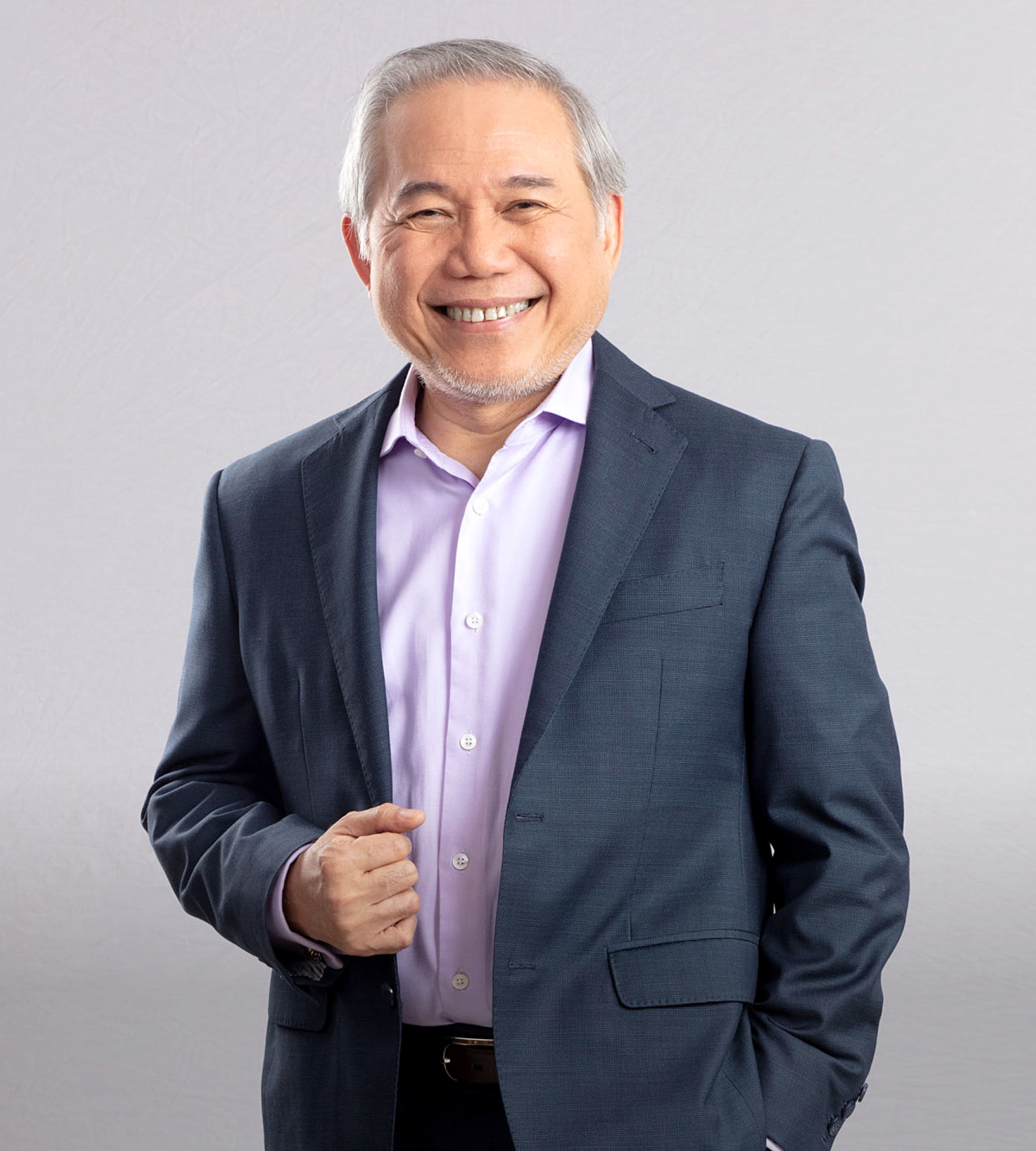
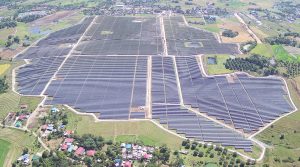
With electricity demand growing at a dizzying rate and supply often falling short of demand, the Philippines faces what some are calling an energy crisis. But Manila Electric Company (Meralco) President and CEO Ray Espinosa is instead looking at the challenge at hand as an opportunity – a chance to steer the country toward a more sustainable future.
The surge is being driven by the rising number of houses with access to electricity, as well as soaring industrial demand for power. Indeed, Meralco forecasts that its electricity output will rise from 46,073 gigawatt hours in 2021 to 65,509 gigawatt hours in 2031. Although the company’s electricity purchases continue to be dominated by power generated by fossil fuels, Ray promises that the company is firmly focused on renewable energy and enhanced sustainability going forward.
“We are also looking at nuclear energy for the future, maybe by 2040 when the new technologies of small- and medium-sized reactors would’ve somewhat matured and been proven out.”
“Our focus is now on renewables,” Ray tells The CEO Magazine. “It has been our strategic thrust to build and invest in renewable projects of at least 1,500 megawatts in the next five to seven years, and we are well on our way to achieving that goal.”
Meralco has developed a sustainability strategy that involves an annual review of its achievements in this area. “We need to build a robust generation portfolio that is responsive to our sustainability strategy and invest significantly in renewables such as solar, even hydro and geothermal to an extent,” he stresses. “We have developed a road to carbon neutrality in 2050, and that’s a path I think many companies should embark on.
“The writing is on the wall. We have to move in step with the rest of the world in terms of shoring our investments and operational capabilities in meeting our sustainable development goals.”
Harnessing the power of the sun is of growing importance for Meralco, which has invested in a number of solar projects. These include Spectrum, a solar company of Meralco that has been working on new solar rooftop installations for Dasmariñas City, which has now been energised, as well as Ajinomoto Philippines Corporation (APC), which are both adding to the company’s growing portfolio.
The partnership with APC involves a pilot solar project with a one megawatt peak capacity at the company’s manufacturing plant in Guiguinto, Bulacan, which generates around 1.33 gigawatt hours of energy every year.
Nuclear energy is also an area of interest because it does not release greenhouse gases, although its status as a renewable energy source is a matter of much debate thanks to its dependence on mined uranium. In February this year, then-President Rodrigo Duterte signed an executive order outlining the government’s ambition to incorporate nuclear power in the Philippines’ energy mix.
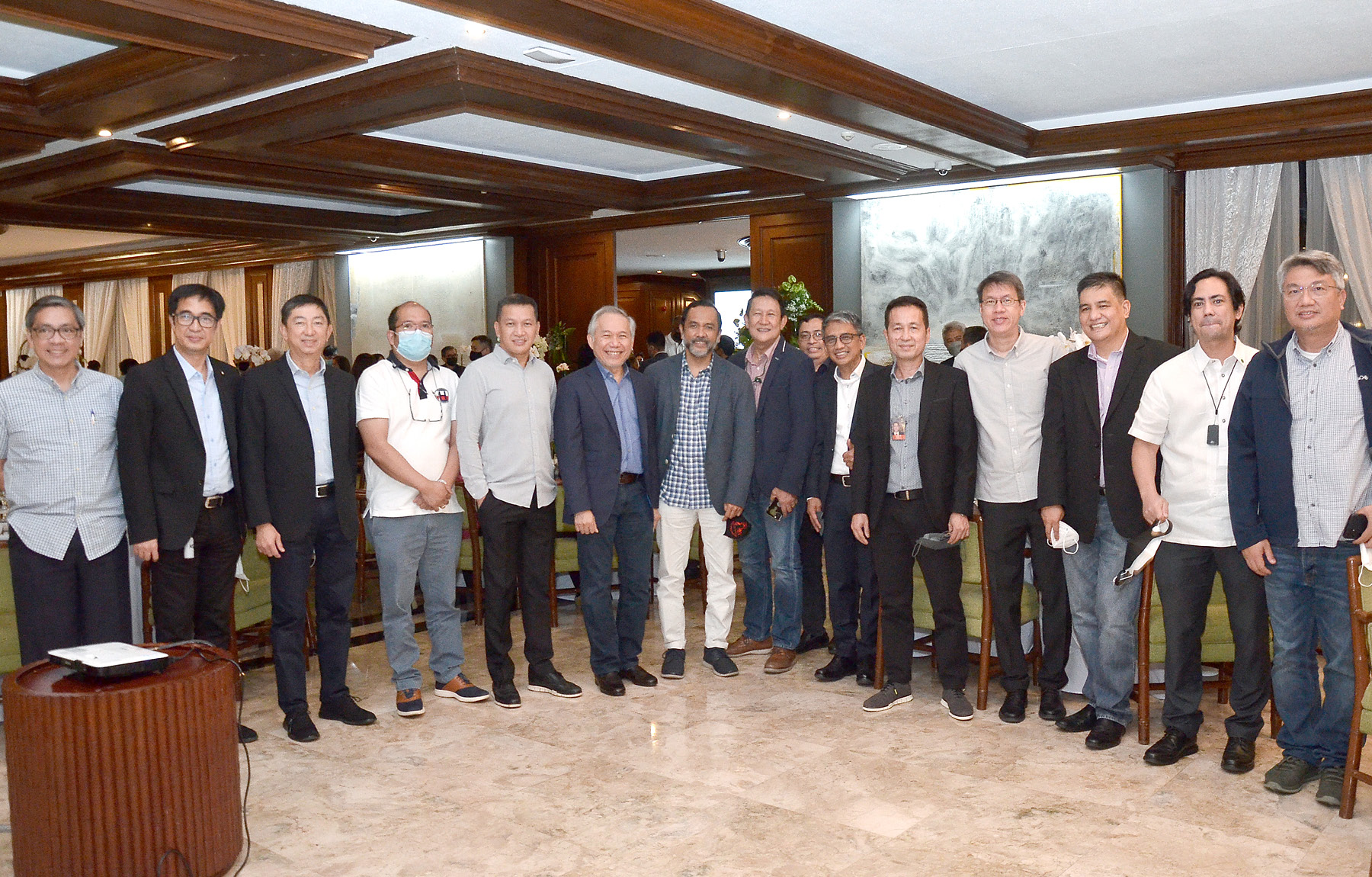
“We’ve acquired a power generation business in the process and effectively merged it with our own power generation to create mass.”
“For the country to achieve its sustained growth targets, it must ensure that it has a reliable, secure, sustainable, quality and affordable electricity supply, including sufficient reserve to guarantee that there will be no disruptions in the power supply,” the executive order said.
“Towards this end, and taking into consideration the experience of developed and growing economies, nuclear power shall be tapped as a viable alternative baseload power source along with alternative energy sources, to address the projected decline of coal-fired power plants which come under increasing environmental opposition.”
It’s a shift Ray is enthusiastic about, describing it as a “great effort” on the part of the government to eventually move away from fossil fuels. “We are also looking at nuclear energy for the future, maybe by 2040 when the new technologies of small- and medium-sized reactors would’ve somewhat matured and been proven out,” he says. “But we are engaged in discussions as we speak with the US Trade and Development Agency and several US manufacturers of those reactors in an effort to pave the way for the resurgence of nuclear energy in the Philippines.”
Meralco is currently the Philippines’ premier electric distribution utility. Although its franchise area of Metro Manila and several neighbouring provinces spreads across just three per cent of the total land area of the Philippines, the company delivers around 55 per cent of the country’s energy requirements. That’s because the area is home to approximately 30 per cent of the country’s inhabitants and generates around half of the country’s gross domestic product.
But expanding this already substantial franchise area is top of mind for Ray in the short to medium term. “We are focusing on trying to expand our franchise area by acquiring new franchise areas via an investment in electric cooperatives that are adjacent or adjoining our franchise area,” he says. “We have already invested in one, in a province that is nearby, and we have been providing them with capital and operational capabilities.
“I’m proud to say that we have been quite successful. That electric cooperative has risen from its rank to basically one of the top electric cooperatives in the country. We think we can replicate that in others.”

“Making the grid smarter entails a lot of new investments in technology. We are looking to smart substations, smart meters, advanced metering infrastructure and advanced network infrastructure”
Ray already has his eye on a number of cooperatives that Meralco would be interested in investing in, and will seek to pursue them in the coming months.
In March 2021, the company’s power generation firm Meralco PowerGen Corp (MGen) acquired 100 per cent ownership of Global Business Power Corp (GBP), a move it said would organise the group’s power assets. GBP’s portfolio was made up of power plants in Visayas and Mindanao which generated an aggregate capacity of 1.09 gigawatts.
At the time of acquisition, a Meralco statement said GBP’s addition to MGen would “deliver scale and operational synergy” to both firms, and provide “ample and reliable supply of power to distribution utilities, electric cooperatives and other customers at competitive rates”.
The transaction completed in 2021 and GBP’s first solar power plant with 115 megawatt peak capacity in Rizal will go online this year. “We’ve acquired a power generation business in the process and effectively merged it with our own power generation to create mass,” Ray says.
In addition to its renewable efforts, this “focus on the future” is seeing the company invest heavily in digitalisation and the smart grid, which can help achieve greater efficiency by harnessing cutting-edge technology and real-time monitoring and control systems.
“The most important digital strategy we have is the digitalisation of the grid,” Ray reveals. “Making the grid smarter entails a lot of new investments in technology. We are looking to smart substations, smart meters, advanced metering infrastructure and advanced network infrastructure, all of which taken together would make the grid much smarter and more digital.”
Consumers will be able to directly experience the benefits of this digitalisation as it allows them to interact with the network and manage their electric consumption themselves. “This is very important, especially with the introduction of the Energy Conservation and Efficiency Act recently, which then requires us and our customers to become more efficient in the consumption of energy,” Ray adds.
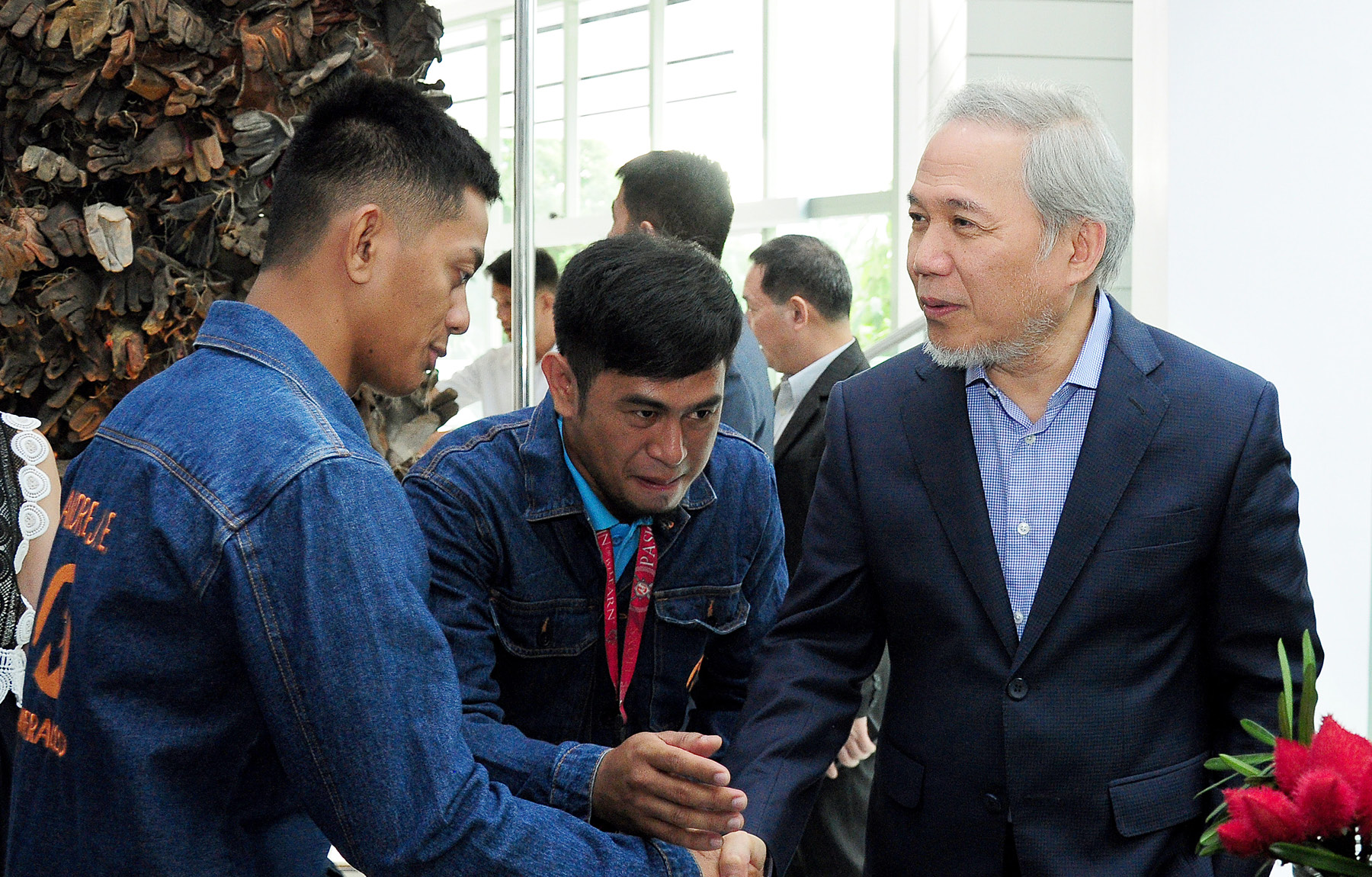
“Our suppliers are forced to charge us the additional fuel costs they have incurred, and we must really pass that on to our customers for it to make sense for us to supply electricity to them at the retail level.”
They will also see enhancements to the customer-facing front end of Meralco’s systems. “We have invested quite significantly in that area to make it easier for them,” Ray says. “We developed a mobile app that customers can download on iOS or Android, which allows them to view their consumption, report outages and pay their bills.” He expects the rollout of this new platform to be complete by the end of the year, with both apps already available.
With Meralco customers now able to make digital payments both on-premises and online, the company is seeing rapid adoption of the new digital payments facilities, with a subsidiary dedicated to overseeing this side of the business. “The pace at which digital payments have increased has been tremendous,” Ray adds.
Despite all these advances, Meralco is not immune to the challenges rocking the energy industry as a whole. “We have a retail electricity business that actually is the leading retail electricity supplier in the country, in terms of both number of customers and the volume of sales,” Ray says. “But we are significantly challenged because of the unprecedented increase in fuel costs. Gas and coal prices have surged to unheard of levels, and it’s important for us to find the balance between the supplier and the end customer.
“Our suppliers are forced to charge us the additional fuel costs they have incurred, and we must really pass that on to our customers for it to make sense for us to supply electricity to them at the retail level.”
While charges have fluctuated throughout the year, down as well as up, in June the company was forced to hike its rate by 3.4 per cent as the cost of generating electricity soared. It meant a typical household using 200 kilowatt hours in a month would see its power bill increase by US$1.49, rising to US$3.73 for a household using 500 kilowatt hours.
Meralco is therefore engaged in discussions with both its suppliers and customers to find a way to bridge these price increases and make them easier to bear. “It’s a very competitive market and I suspect most of our competitors are in the same boat, trying to address the same problem,” Ray says.
Finding ways to thrive in the face of such stiff price hikes is clearly one of Meralco’s key tasks over the coming year. Also top of mind for Ray is working to strengthen and expand its core business. “We need to be able to strengthen our network and make it resilient,” he stresses. “As you know, we are a disaster-prone country, and our continuous investment in resiliency is one of our foremost imperatives.”
Helping the government achieve its goal of full electrification of the country by 2022 is also on Ray’s agenda, although it is a project that was sidetracked by the community quarantine arrangements imposed during the pandemic. “We also need to electrify the underserved and unserved areas,” he says. “There are still a few, and we will be able to address that with the passage of the microgrid law that would then allow us to develop and establish microgrids in areas that cannot be really connected to the main network.”
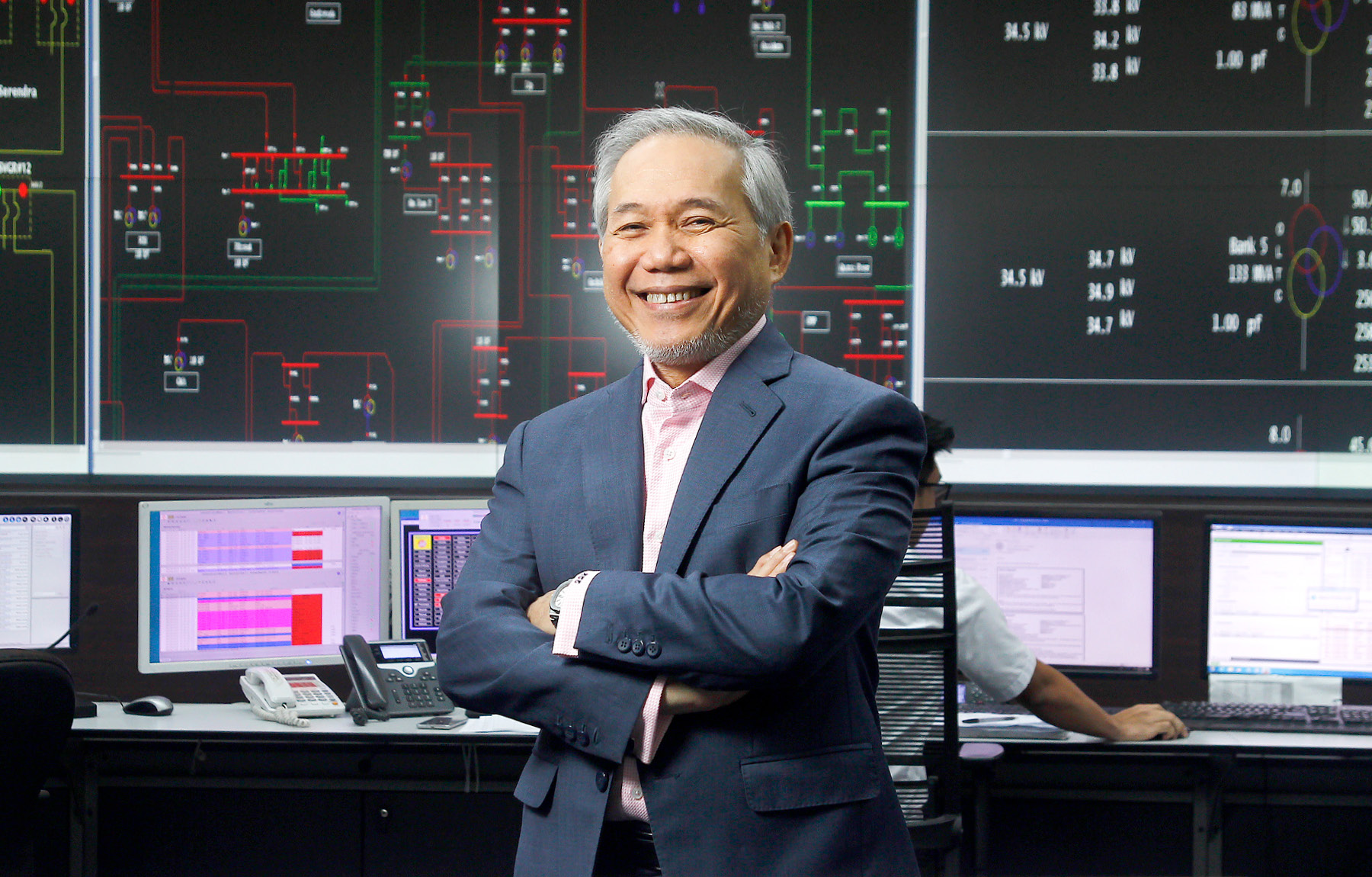
A new deal with Robinsons Land Corp (RLC) will see Meralco boost its Interruptible Load Program (ILP) de-loading capacity, reducing electricity drawn from the grid in times of power supply deficiencies.
The deal involves the ILP enrolment of 10 Robinsons shopping malls, with a total committed capacity of 31 megawatts, making RLC the 122nd company to sign up to the program which now has a total committed de-loading capacity of over 580 megawatts in the Meralco franchise area.
Implemented by the Department of Energy alongside distribution utilities, the program comes in response to dwindling power reserves, particularly during the summer months. It calls on participants to temporarily de-load from the grid and turn on their generators whenever the National Grid Corporation of the Philippines declares insufficient power supply.
In January 2022, former-President Rodrigo Duterte introduced a measure to help achieve the government’s goal of 100 per cent electrification by encouraging microgrid development in unserved and underserved areas nationwide. Under the law, Microgrid Service Providers are allowed to operate in areas with no access to electricity or where the supply is intermittent.
Meralco’s first microgrid solutions were installed in 2019 on Isla Verde, with a 32 kilowatt peak solar photovoltaic system and 192 kilowatt hour battery energy storage system. Meanwhile, Cagbalete Island has a 60 kilowatt peak solar photovoltaic system and 150 kilowatt hour battery energy storage system.
With so many projects underway, the arrival of the COVID-19 pandemic in 2020 certainly presented an unexpected disruption. “No one was prepared for what the pandemic was going to be and I think it became a challenge for all,” Ray says. “The way we approached this challenge was to act with utmost speed, putting into place the measures and counter measures for us to be able to address the virus as medical science was trying to figure out and address the various aspects of it.
“A happy organisation leads to good customer service, and that’s something we practice here at Meralco. We have actually made significant strides in improving customer experience and customer care.”
“So our ability to respond to a crisis was tested, and I’d say that Meralco has been fortunate to have been able to address the crisis in a way that actually contributed to the wellbeing of the organisation, as well as continue providing the most service to our customers.”
The company did not shut down and maintained an impressive tally of 70 per cent of its people out in the field to ensure uninterrupted electricity service as people were confined to their homes. “That, to me, was very important. We could not afford to shut down the business,” Ray stresses.
A key benefit working to Meralco’s advantage as it tackles this array of challenges has been its team of people, according to Ray. “What sets us apart is the people that we have,” he insists. “We have a very strong workforce, a deep talent pool, as well as a dedicated and loyal employee base.”
With this dynamic structure in place, the company is better able to kick goals by forging a strategy that is “centred on the customer as well as our own organisation”, Ray explains.
“A happy organisation leads to good customer service, and that’s something we practice here at Meralco. We have actually made significant strides in improving customer experience and customer care.”
Around 60 per cent of Meralco’s customer complaints and issues are now addressed digitally, with the remainder still going through its more traditional voice call centre.
“Our resolution of cases is in the high 90s already. That is very important,” Ray says. “We continue to look at the processes and to still further improve them in terms of applications and in terms of responding to outages. And, more importantly, it’s the speed at which we can energise a home or a business that is very important to us.”
Maintaining excellent relationships with Meralco’s power generation suppliers is critical as the company strives to deliver adequate levels of power to its customers. “We work with them closely during the phase of contract negotiations and even after,” Ray says. “We maintain an open channel with them. We’re able to discuss issues and flesh them out amicably outside of the court system or outside of arbitration, which has been very good for us.”
Those power generation suppliers have so far been “extremely cooperative”, particularly in terms of addressing high fuel prices and staggering bills so that Meralco can ensure its customers’ needs are met. The company has also built very strong relationships with other kinds of suppliers, such as those that supply its equipment and applications, enabling them to work more closely together towards common goals.
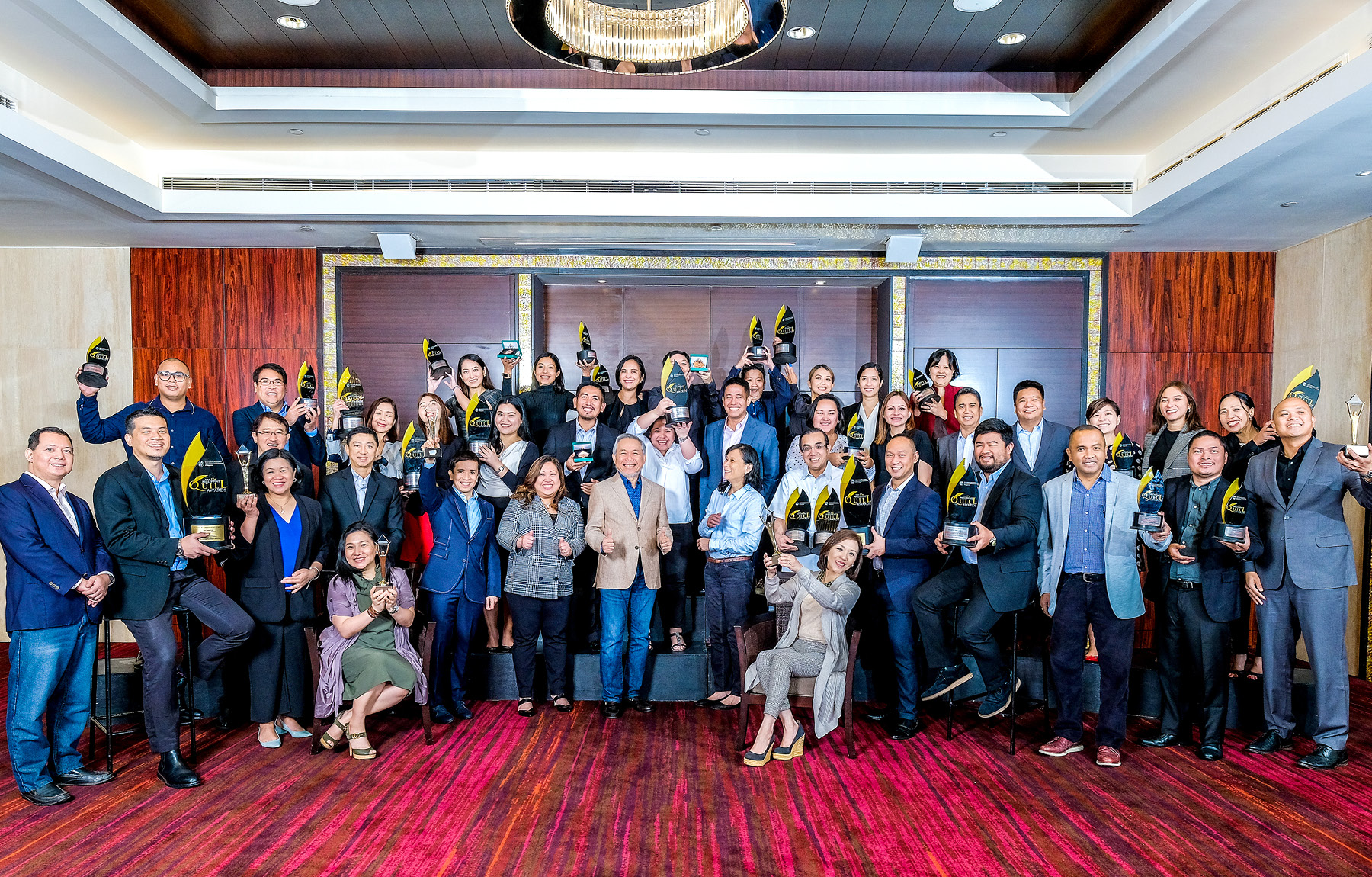
“We have a multiple vendor approach to make sure that we get the most competitive prices as well as make sure we can minimise, if not completely prevent, supply chain disruptions.”
“In fact, we are set to launch this year our sustainability scorecard for our suppliers. So we would want them to invest in sustainability, and we intend to show them our sustainability strategy, after which we will require them to embark on a minimum sustainability strategy to make them in step, or in stride, with us,” Ray says. “It’s a scorecard that we plan to make operational and effective in a year or so, and by that time only suppliers that meet the sustainable scorecard can continue their accreditation with Meralco.”
The company also depends on a number of suppliers for the all-important meters and smart meters, taking care not to become too reliant on a single supplier. “We have a multiple vendor approach to make sure that we get the most competitive prices as well as make sure we can minimise, if not completely prevent, supply chain disruptions,” Ray explains. “Especially these days when there is a bit of supply chain disruption, and lead-time for sourcing or procuring equipment has worsened given the geopolitical situation in Russia and Ukraine. And even, to a certain extent, here in Asia.”
Even with so much uncertainty in the air, it’s clear Meralco is equipped with the necessary strategies to overcome the hurdles ahead, and a steely determination to fulfil its environmental commitments. By looking at it as a great opportunity, Ray is helping forge a new path for the power industry – one that leads to a brighter future.